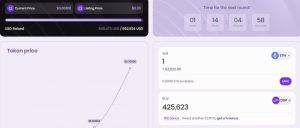
Marathon, the largest Bitcoin miner in the world, has recently invested 250 million dollars to purchase additional Bitcoin, aiming to make the cryptocurrency a strategic reserve asset.
Let’s see all the details below.
Strategy “full hodl”: the miner Marathon consolidates in the Bitcoin market
As anticipated, Marathon Digital Holdings recently announced an offering of senior convertible notes worth 250 million dollars, with a maturity date set for 2031.
The offer, proposed through a private channel, is intended exclusively for “qualified institutional buyers.”
The company, a world leader in Bitcoin mining (BTC), is also considering the option to increase the offering by an additional 37.5 million dollars, depending on market conditions.
According to reports, Marathon intends to use the funds raised to expand its Bitcoin reserves. The company stated the following in this regard:
“Marathon plans to allocate the net proceeds from the sale of the bonds to the purchase of additional Bitcoin and for general corporate purposes, which may include working capital, strategic acquisitions, expansion of existing operations, and the repayment of debts and other outstanding obligations.”
As we know, purchases by large institutional investors, such as BTC miners, can significantly influence the price of Bitcoin, given the large sums involved.
It is no coincidence that investors often observe the purchasing behaviors of such institutions to evaluate the trend of Bitcoin demand.
In line with its “full hodl” strategy, Marathon has increased its Bitcoin reserves by 124 million dollars in the month of July alone. Bringing the total to 20,818 BTC, with a value of over 1.14 billion dollars as of August 6.
Bitcoin as a strategic reserve asset
Fred Thiel, CEO and president of Marathon Digital, confirmed this strategic decision in a statement on July 25.
In particular, he emphasized the company’s intention to hold Bitcoin as a strategic reserve asset:
“We purchased 100 million dollars in BTC last month and now we commit to holding our reserves entirely in Bitcoin.”
This move by Marathon represents a positive signal, especially in the post-halving of Bitcoin in 2024, which has reduced block rewards by 50%.
While some miners might be forced to sell BTC due to the reduction of rewards, Marathon continues to strengthen its position, betting on Bitcoin as a key asset for the future.
However, despite this encouraging news and the continuous purchases by Marathon, the price of Bitcoin has remained below 60,000 dollars.
At the moment Bitcoin stands at around 59,908 dollars, with a decrease of 1.2% in the last 24 hours.
Even the inflows into exchange-traded funds (ETF) on Bitcoin in the United States have remained stagnant, recording cumulative net outflows of 89 million dollars on August 9, according to data from Farside Investors.
The challenges of Bitcoin mining
On August 11, 2024, Bitcoin miners recorded the lowest daily revenues of the year, with earnings of only 2.54 million dollars.
This represents a significant decrease compared to the early months of 2024, when miners were earning about 6 million dollars per day.
This contraction is the result of several factors, including the Bitcoin halving that occurred in April, which reduced the mining rewards from 6.25 BTC to 3.125 BTC, triggering a decline in revenues.
Furthermore, the prolonged bear market, the increase in network difficulty, and the resulting liquidations have further aggravated the situation.
The halving, although anticipated by the community, required a restructuring of operations for many companies in the sector. Despite the reduction in overall revenues, some companies have shown resilience.
In any case, the recent drop in mining revenues highlights the difficulties that continue to affect the sector. With a constantly evolving market and an unstable Bitcoin price, miners must constantly adapt to remain competitive.
The mining industry, in this context of challenges and opportunities, must continue to innovate to overcome the obstacles posed by the halving and an uncertain economic environment, maintaining a focus on long-term operational sustainability.






















